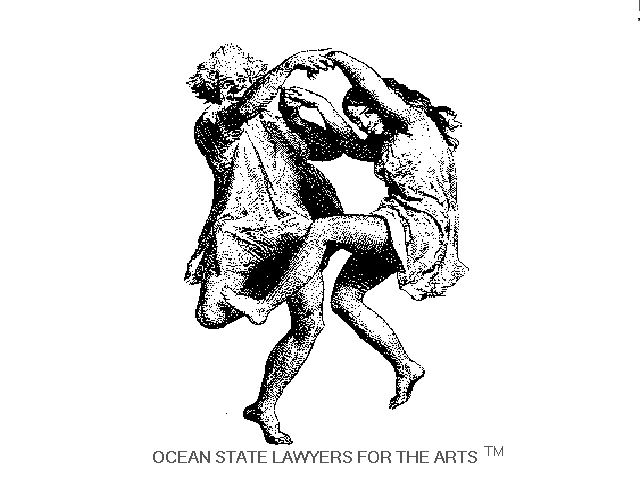
When an artist creates a work of art, the copyright comes into existence automatically. No registration is required, though it may be necessary to protect some remedies if the artist ever plans to sue for infringement (registering copyright) . The copyright provides the owner with a number of exclusive rights, including the right to make new versions of the original work, called derivative works.
Such a derivative work would include the adding new artistic elements to a past work, i.e. putting the Mona Lisa in a halter top and pigtails while smoking a cigarette. This concept also protects an artist from having his/her original work reproduced in a different media by another artist, without the consent of the first artist.
Such was the case in a 1985 federal court case involving advertising photographer, Hal Davis, muralist, Jack Mendenhall and a gallery that displayed Mendenhall's work. Davis had created a photograph for a Martell Cognac ad campaign. Mendenhall allegedly projected the image on canvas, sketched and painted it with very little modification other than in size and media.
The photographer was awarded $11,000 in damages and $4000 in court costs and legal fees. He was also granted the copyright in the painting, meaning that his name would always accompany its use and he would be entitled to compensation for all future uses.
There have been many other cases involving similar issues, but a recent case before the U.S. Circuit Court for the Second Circuit in Manhattan is one worth discussing. The case involves a charge of copyright infringment brought by Art Rogers, an artist who created a photograph of a couple holding eight puppies. This photo was made into a greeting card which was purchased by artist Jeff Koons. According to the trial record, Mr. Koons used the photograph as a model for four sculptures, three of which sold for a total of $367,000. No permission was given for the use of the photo as a model for the sculptures.
Koons asserted a number of defenses:
1. That the sculptures were a whole new form;
2. There were added colours and details not present in the photo, thus making the new works a "fair use" in that they were a "reinterpretation" of the original photo;
3. The photo was simply the image Koons chose for his sculptures.
4. If Rogers wanted to create a sculpture based upon his photo, he would have lost nothing by the copying because the copies were "Koons works" and not "Rogers works."
5. Further the copies were not mass-produced, and therefore probably did not prevent Rogers from marketing his own sculptures if he chose to do so.
The argument against Koons was pretty straightforward. The use of the work of another, or any part thereof such as the image itself, without permission is generally copyright infringement. A prime example of the kind of use complained about was Andy Warhol's Campbell Soup Can artworks. The question was would the Court favor the rights of an artist to freely interpret the images of others for the purpose of art and free speech or would it protect the property rights of the owners of those images?
It was admitted that Koons had done no more than give a copy of the plaintiff's photograph to a group of artisans with the instructions to copy it exactly and the trial judge, as a reasonable and average layperson, decided the works were substantially similar. The appellate court affirmed these conclusions. It also decided that Koons' sculptures were neither fair use nor parodies of the plaintiff's photograph.
The court did make a comment that favored the defendant's, though they left the decision up to the trial court. This comment regarded the issue of damages, suggesting that, although damages can be measured by the defendants profits due to the infringement, a reasonable license fee for the plaintiff under the circumstances might be more appropriate. It considered that part of the defendant's profits may have been due to his position in the art world, thus suggesting that profits may have to be apportioned in any event. Still, one artist should think twice before creating a new work based upon the art of another, without the other's permission.
. THIS WEBSITE CANNOT BE USED AS A SUBSTITUTE FOR SOUND LEGAL ADVICE FROM A COMPETENT ARTS OR ENTERTAINMENT ATTORNEY. In the event of a legal problem or question, specific legal consultation is advised. This website is intended only as a means of educating arts organizations and artists of all disciplines as to their potential legal rights and liabilities. The information provided is made available with the understanding that neither OSLA nor the office of David M. Spatt is engaging in the rendering of legal counsel.
copyright 1997 David M. Spatt, All rights reserved
Reproduction is prohibited without the express written consent of the author
